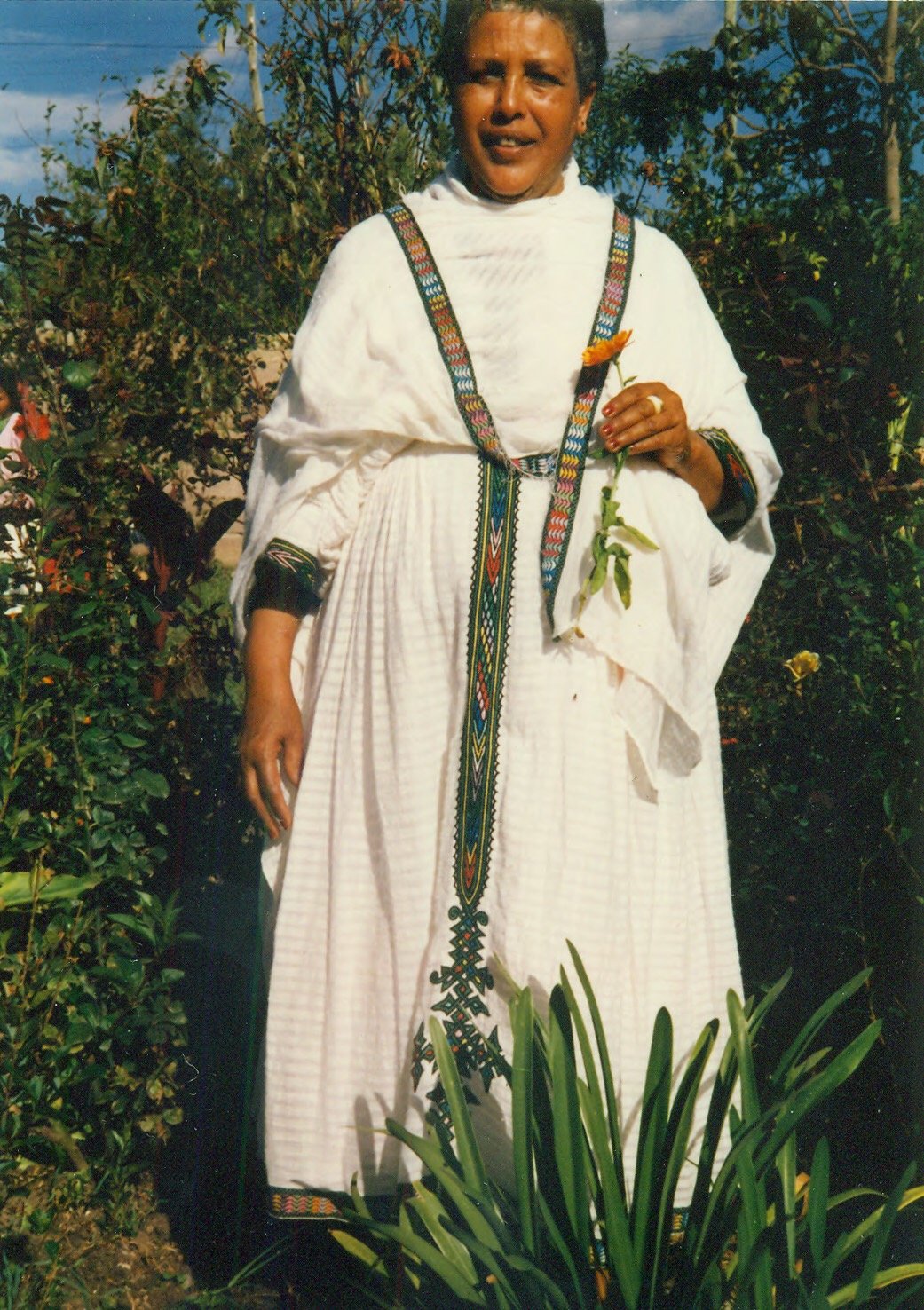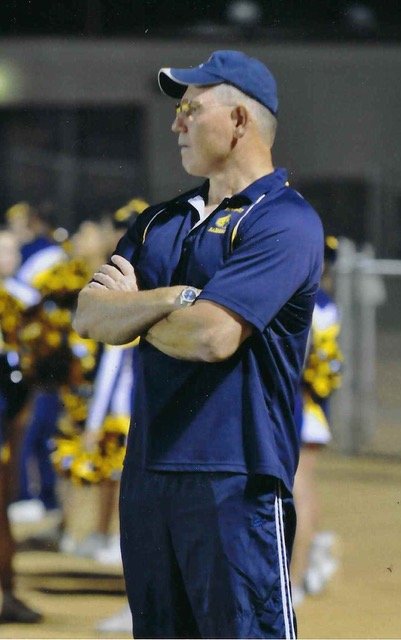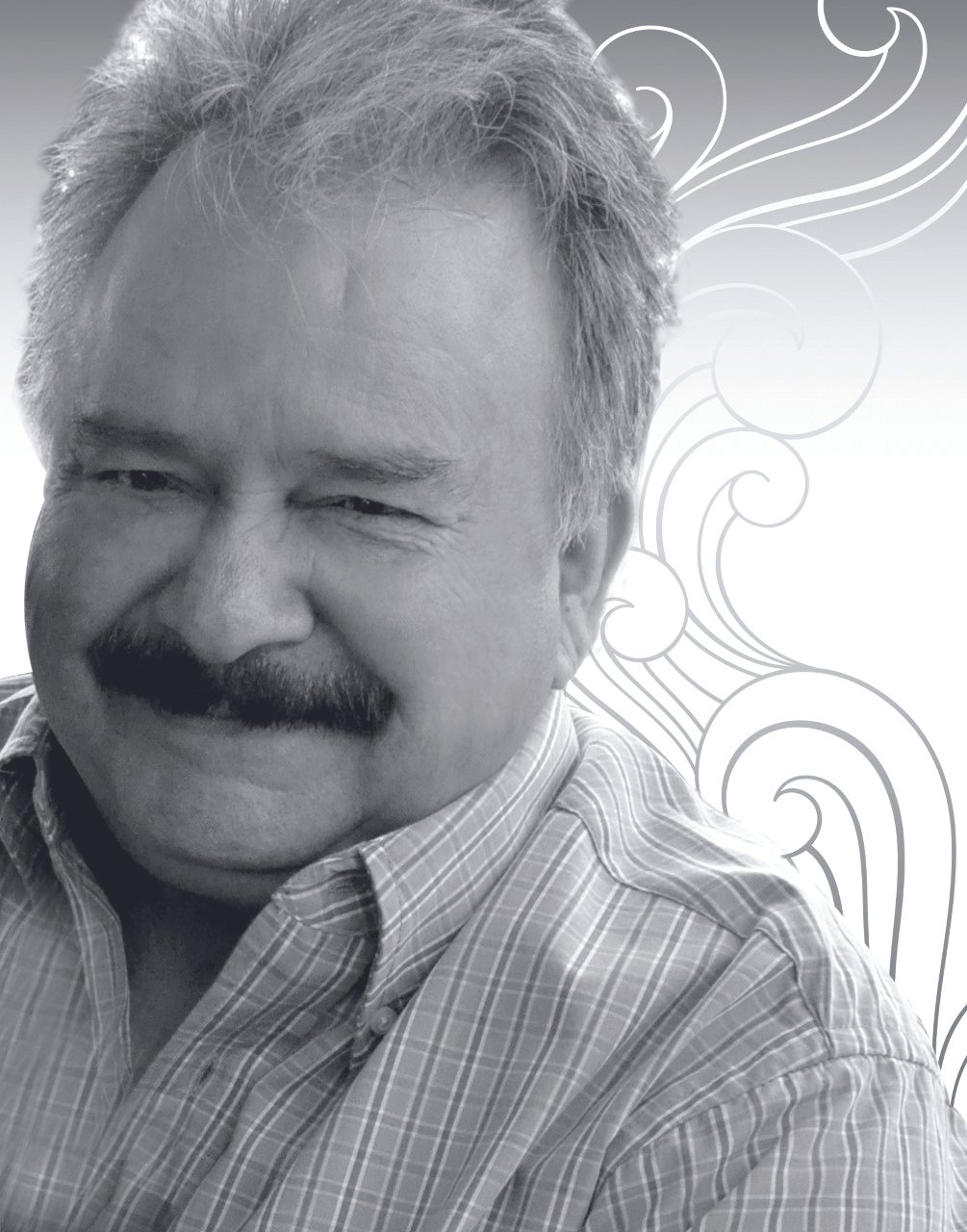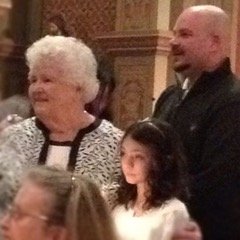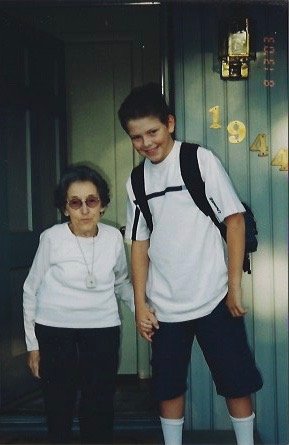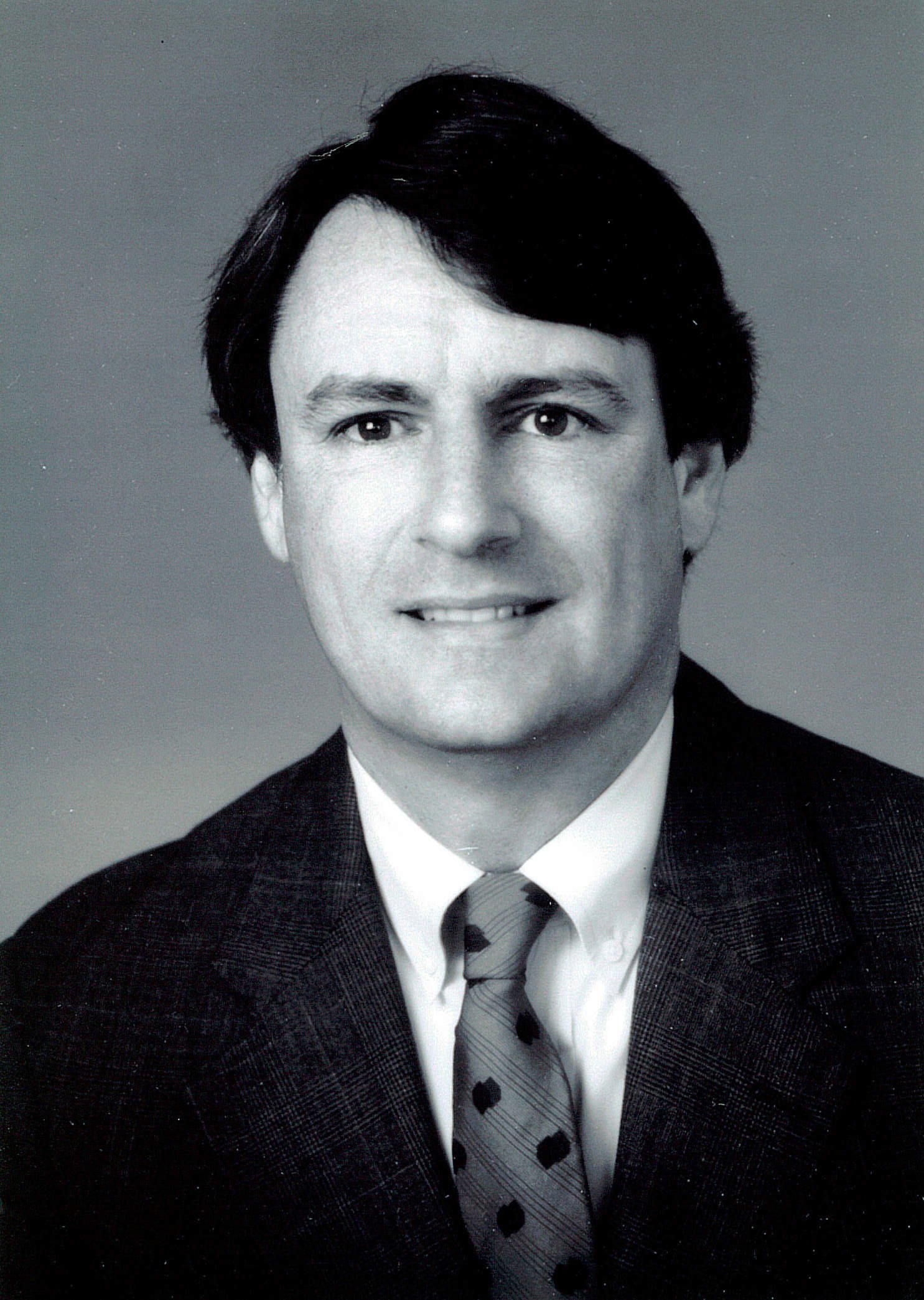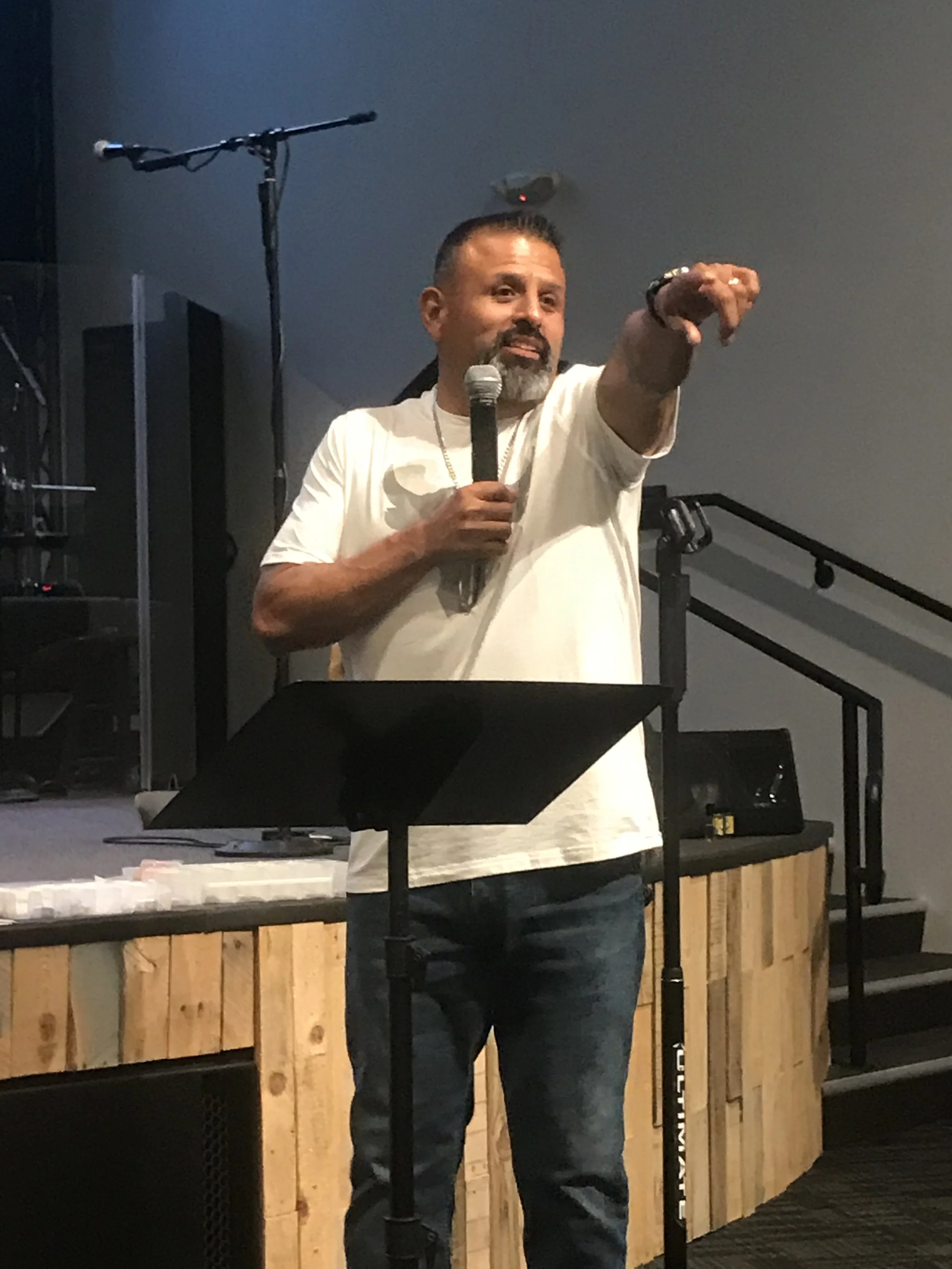NOMINATION CHOSEN FOR THE SACRAMENTO DOCK
ISABEL S. NARANJO
by Krystal R. Moreno
Some mornings, I’d wake up to Grandma Isabel loading food, clothing, and supplies into her black 1974 Caprice Classic. I loved those mornings, knowing she’d eventually load me into the car, too. I’d swivel in the bucket seat, anticipating our excursion along the Sacramento River. As her eager co-pilot, I helped deliver supplies to farmworker families and played with the children at each stop along our route. I was too young to comprehend the tears in their mothers’ eyes when we left; gratitude, relief, and a silent unspeakable understanding.
Isabel Naranjo was a migrant farmworker with a 4th grade education. She worked in various California camps before settling in Sacramento with her mother and four children. She was a single-mother, provider, and protector. In her late 40’s, she went back to school, received her college degree, and became an advocate for migrant farmworker families. Knowing the daily challenges farmworkers faced, from feeding and clothing their families to educating and keeping their children safe, my grandmother was driven to fill the critical need in these communities.
She helped establish childcare centers for the children of migrant farmworkers in parts of Yolo and Sacramento counties. She secured funding for the centers which provided meals, recreation, and educational curriculum. I nominate Grandma Isabel, in hopes that her work, her life, and her legacy will be remembered.
The River Crossing judges panel has selected Isabel S. Naranjo for the naming of the Sacramento dock due to her strong commitment to her family and her community. As an advocate for migrant farmworkers, the judges were inspired by her passion for providing care and resources to this often overlooked group of people. As a child of immigrant farmworkers who worked tirelessly to achieve her goals, she gives immigrant children hope that they too can achieve their dreams. By naming the Sacramento dock after Isabel, the judges believe visitors to Sacramento will see the city as a place that welcomes immigrants with open arms.
NOMINATION CHOSEN FOR THE WEST SACRAMENTO DOCK
ETENESH
(You Are My Sister)
by Selam Bekele
In East Africa, the Nile River has always been a point of friendship. Wherever the river runs, the people would gather. The river is where people would take a break, share their secrets, and pour their stories into a vessel that will never overflow.
Growing up in West Sacramento, my river was my grandmother, Etenesh. As the story goes, my great-grandmother was an only-child who carried the weight of loneliness. She had no one to grow up with, and no one to hear her stories. So when her daughter was born, she named her Etenesh which means “You Are My Sister”. Etenesh was her announcement of friendship, and a proclamation of the end of her loneliness.
Etenesh went on to have 10 children, who each had children of their own, and we all emigrated from Ethiopia to West Sacramento in the mid-90s. At first, it was difficult to adjust to a new country, a new culture, and cope with the longing for our homeland. But every week, we went to visit our river, and build a community full of laughter and joy. West Sacramento became a second home, and new memories began to flow.
Etenesh was my river in the way that she carried my family through infinite journeys and provided a fluid space for communal storytelling.
Etenesh lived in a small home in West Sacramento and passed away in 2016. She was a stream of hope for her mother, and continues to provide solace wherever she flows.
The River Crossing judges panel selected Etenesh (You Are My Sister) for the naming of the West Sacramento dock. The judges were inspired by her unique story of modern immigration, the abundance of love she had for her family, and her connection to the river. The judges were moved by how Etenesh Zeleke helped her large family integrate themselves into the West Sacramento community while maintaining ties to their Ethiopian heritage through gatherings and storytelling. The judges were drawn to the beauty and uniqueness of her story and believe everyone can see a part of themselves in Etenesh. In Amharic, the official language of Ethiopia, Etenesh is written.
Additional Nominees
KATHY ANDERSON
by Jane Ferguson
My grandma, Kathy, has been a part of the Sacramento community her entire life. She grew up here with my great-grandma and started her own family. When I was born, my great-grandparents, grandparents and my family all lived one block away from each other because she wanted to keep our family close.
When grandpa became paralyzed, my grandma became his right hand and legs. When she wasn’t in the hospital with my disabled “Poppa,” she was driving my carpools to different practices and sometimes even school. She made sure she got both of them, wheelchair and all, to all of my sporting events, swimming all over places in Sacramento, water polo games at McClatchy High School, and even my soccer games in Land Park.
After my great-grandma and grandpa passed away 3 years ago, she decided she wanted to live in the same house as me and my family so we would be just as close. She volunteers for Kaiser South and she sings in the choir at Centennial Church. She means the world to me and my family. She helped raise me and my two brothers and most recently helped financially put me through college. Her endless support sometimes goes unrecognized. Every family that knew me growing up, especially at Sacramento swim clubs, knows her for being one of the strongest, understated women in our community.
JOSEPH ANGELLO
by Joseph Angello Jr.
My father, Joseph Angello spent much of his 50 years as an architect, working to beautify the city in which he was born and raised, Sacramento. From Sacramento High School, to the downtown convention center theater, to his amazing leadership and vision in Old Sacramento, he was personally and professionally responsible for much of what we now see and appreciate in our city.
He spent a couple of decades or more fully committed to transforming Old Sacramento from a dilapidated eye sore into a charming and thriving tourist destination. I have very fond (and not so fond) memories of the “early days” of Old Sacramento, from the annual New Orleans Jazz Festival (fond) to cleaning salvaged bricks by hand in 110-degree heat (not so fond), to be used for reconstruction of their original building site.
Joseph Angello, more than anyone I know, deserves to be remembered for his tireless pioneering contribution to the waterfront area in downtown Sacramento.
CHRIS BAKER
by Gabriel Baker
Coach “Chris” Baker has been one of the most influential figures in the West Sacramento area. Born in Broderick, CA, Chris Baker has coached football and basketball at Valley High School, Washington High School, and his iconic legacy at River City. Chris demands the best out of everyone who he encounters and delivers his best to them. His coaching philosophies are to aid his students in reaching their maximum potential while transitioning them into character focused adults. Alongside Chris’s 43-year coaching career, he was also an educator in English, History, and Physical Education.
Chris stands out in our community as generations in West Sacramento have sought out his instructions and guidance. His work was never about making money but giving back to the community he was raised in.
As a musician and master fisherman, it would be appropriate for the docks to be named after his renowned talent. In my life experience, I have never heard any member of our community say anything but high praise of Coach Baker and the influence he has had on the lives of many. The 916 will always be in his heart and would never have changed his sacrifices to his community.
SETH BARRY SR.
by Candace Curtis
My great grandfather, Seth Barry, was born and raised along the Broderick riverbank in 1896. His father was the town judge, Jerome Barry. His brother, Ellis Barry, was the constable. Seth was a commercial fisherman. He spent a great amount of time on the Sacramento River. The river was second nature to him. He worked and played on it. It served as a constant backdrop in his life. As a kid he won many swimming and boat races with his siblings. He also helped build the historic I Street bridge that soars above the river.
When he retired, he and his brother Ellis were the go-to people law enforcement called to drag the rivers to look for drowning victims. While this is an unorthodox way to serve the community, my grandfather never hesitated and was proud to have helped so many families. Seth didn’t live the flashy political life his father and siblings did. He was a quiet and thoughtful man.
He married for life. He had one son, one grandson, and one great granddaughter. All the while living on 4th street in Broderick facing his beloved river. My grandfather loved the Sacramento river and quietly served it.
STELLA BLEAU
by Miles McConnell
I don’t know man. Stella, she is basically out of this world. Fitting ’cause her name Stella means Star. She is outgoing and strong willed. She shows so much courage and I truly believe one day she will do fantastic things.
ARMANDO R. CID
by Amar Cid
Armando R. Cid was a founding member of the Royal Chicano Air Force. He was a prominent member of Sacramento and fought for civil rights and equity with an artistic approach for the greater community. Armando worked with all people from at risk youth to the aging adults. He worked with inmates as an arts and corrections facilitator and later in retirement as teacher in the very special arts for vision impaired and autistic students. He also traveled the state working with migrant communities and assisting in personal expression with art as a means to heal.
He was a long-time resident of Sacramento who was raised in Oak Park and graduated from Sacramento High, Sacramento City College, and CSUS with an MFA. His tile mural in Zapata Park in downtown Sacramento was one of the first public art projects that helped create the public art partnership. Armando served his country during the Vietnam era and used the GI Bill to attend Pasadena College of the arts. He transferred to CSUS during the Civil Rights movement to work with his home community.
He is particularly known for bridging communities through his art. He was a family man beloved by all his family and friends. His art is found around the country in community centers and museums, including the Smithsonian. He is credited for starting Dia de los Muertos in Sacramento nearly 45 years ago and is known for his paper mache calaveras, master acrylic painting with a Chicano theme of chilies, and historic posters depicting civic engagement.
FRANK CIRILL
by Clyde Macdonald
The Sacramento area has some of the best public access to rivers in California: parks, bike trails, hiking trails, equestrian trails, and boating. This did not happen by accident; it took hard work by people who had vision and who cared.
The beginning was the creation of the now-famous American River Parkway. Today, trails connecting to the Parkway’s trails are spreading along both sides of the Sacramento River, in Sacramento and West Sacramento. Frank Cirill was one of the early leaders who devoted decades of his life to river parkways. He was a board member and often president of Save the American River Association (SARA) for 51 years. SARA is an organization dedicated to supporting the Parkway, including opposing numerous threats to the integrity of the Parkway.
When the Bay Area wanted to divert a huge amount of river water from near Folsom Dam, Frank was one of the leaders who organized, argued, and fought back. The court fight lasted for 21 years. If that fight had not been won, the river and the Parkway would have been greatly diminished.
Frank was a gentle man, an honorable man, and widely respected. He died in 2017 at age 94.
PAMELA “KOTO” CLEANSO
by Jacky Calanchini, Malissa Tayaba and Jaime Lanouette: Nisenan Basket Weavers.
We know Pamela as the last survivor of the Nis-sim Pa-we-nan, the river people of the Sacramento Valley. Pamela survived John Sutter, vile epidemics and the California Gold Rush. At a time when Native women lived in extreme danger, Pamela remained near her scattered village and continued the traditions of this land.
Pamela’s resilience is evident through her strategic integration, the secrets she guarded to keep her family safe, and her determination to survive. After enduring the forcible removal of her entire village, Pamela made her way back to Pusune. During the early 1900s, Pamela and her family lived on a houseboat moored at the future site of the West Sacramento dock, overlooking the Old Sacramento waterfront. Without Pamela’s adaptability, the Nis-sim Pa-we-nan would have faced total extinction and with them the loss of their culture and traditional ecological knowledge.
Although the land and first people of this area are still recovering from those chaotic times, Pamela’s descendants often return to these ancient sites to gather basketry materials, maintaining our deeply rooted Nisenan traditions.
Some people visit this city on business or as tourists, but we visit these sites with the deepest sense of connection and patriotism. In that spirit, we acknowledge Pamela “Koto” Cleanso.
JOHN COLLENTINE
by Ann Collentine
Photo credit: Lezlie Sterling, Sacramento Bee
In November of 1970, my father John Collentine, an active outdoor enthusiast schooled in the writings of John Muir, was reading an article in the Sacramento Union newspaper. Warren Harding and Dean Caldwell had been perched on the granite rock face of the 3000 foot El Capitan in Yosemite Valley for 20 days. They were attempting a first climb up a perilous route called The Wall of Early Morning Light.
Harding was an icon of the early Sierra Nevada rock climbers, one of the first to scale Yosemite’s Half Dome. In the article, Harding’s elderly mother, who lived in West Sacramento at the time, stated she had never seen her son climb. After reading this, my father found her name in the phone book and gave her a call. My father offered to drive her—with his own children in tow—to Yosemite Valley to see Warren climb the next day.
Upon arriving in the valley with Warren’s mother, we were greeted as VIP’s by the entire gathering of climbers and national media. As Harding and Caldwell inched up the enormous wall of granite, onlookers watched what had become a spectacle of survival. As minor celebrities of the moment, we were given the opportunity to gaze through Life magazine’s telescopic cameras.
My father, John Collentine was an independent thinker who demonstrated that an individual can make a difference even if it’s one person at a time.
NATHAN CORDERO
by Tim Foster
Raised in the tiny community of Yolo California, Nathan Cordero was a Sacramento-based artist for most of his career. Cordero practiced a unique style of artmaking, creating drawings, paintings and sculptures using objects he found on the streets - old doors, crutches, grocery lists, tennis racquets, dead leaves - anything could become art in Nate’s hands.
Though he had no formal training as an artist he was quickly recognized as one of the region’s best. His work has been shown throughout the United States; in 2011 he was the subject of a retrospective at UC Davis’ Nelson Gallery, and “Stay Awhile”, a memorial survey of his work, was recently on display at the Verge Gallery in Sacramento.
Cordero struggled with epilepsy for most of his life and died from complications during a seizure in 2018. Though he spent his adult life in the city, Cordero’s rural roots never left him; when he wasn’t making art he could often be found fishing in one of the area’s rivers, or metaldetecting along the banks.
JULIUS A. FEHER
by Linda Machado Carlson
Photo Credit: Mike Garten Collection, West Sacramento Historical Society
My uncle, Julius A Feher, was born at home in West Sacramento in 1927. His parents were West Sacramento pioneers who moved to the city in 1921. Always a journalist, Julius starts his first newspaper THE WEST SACRAMENTO NEWS READER at the age of 11. It was the only truly West Sacramento paper. He wrote, published and delivered it himself with about 157 subscribers. In his teen years he also published EAST YOLO HISTORY a 30-page book he wrote, printed, published and bound himself. He later wrote articles while in the US Army Signal Corps, where he was stationed at the US Legation in Budapest and was an interpreter at the Nuremberg Trials.
After returning to West Sacramento in 1952, he continued in journalism with the Tibbet’s owned EAST YOLO RECORD. In 1964, in a retail office supply store he owned with his business partner – they started the NEWS LEDGER. He edited the paper until his death in 1988. This newspaper is still committed to West Sacramento today because of his love for West Sacramento – the only place he ever lived (except for his military days).
He was an intelligent and committed newspaper man. His partner said about him “HIS MORAL STANDARDS AND SENSE OF ETHICS WERE THE HIGHEST I HAVE EVER KNOWN”. He loved West Sacramento and spent his entire life showing that admiration through his journalism.
HARRY FONSECA
by Louisa R. Vessell
Photo credit: George Wessler
My family on my mother’s side is from the Bryte district along the Sacramento River of West Sacramento where Harry Fonseca was raised. Harry was the youngest of 7 children. I met Harry in the 1950’s at Bryte Elementary school. We played or went to his parents’ home; he would show Laurel and Hardy films in the basement. He tap-danced on Bill Rase’s children’s TV program. I was awestruck. At 11 years of age, he knew he wanted to be an artist. I had no idea what I’d do in life.
He enlisted in the Navy and stationed in Alaska. I wrote; he wrote with drawings in his letters – beautiful. He was a joy to all. Elsie, his sister, said “He was like sunshine when he walked into a room”, so humble and funny. Once we went to a party where the hostess told us to put our coats in the bedroom, “be careful because there’s an ocelot in there.” Harry quipped, “I hope he doesn’t like dark meat.”
Harry’s family is Portuguese, Hawaiian and Native American. When he learned of his Native American heritage, it had a huge effect on him. He got involved with the culture through painting and traditional dancing.
His influence on me made me love Native American culture and spirituality.
Harry passed away at age 60 in 2006. He was a shining star. Because of him, I found what I would do in life, and it involved the arts.
SISTER CLAIRE GRAHAM
by Marcela Iglesias
Portrait created by Kerri Warner, courtesy of the Wellspring Women’s Center.
Sister Claire was someone who dedicated a large part of her life to building bridges – helping those who had nothing, and no one, cross over to a life of dignity and love. She brought joy and fierce compassion everywhere she went.
One of Sister Claire’s many accomplishments was co-founding the Wellspring Women’s Center in Sacramento – which still has a positive impact on generations of women and children. Claire worked tirelessly to advocate for those without a voice. She helped many people in multiple ways.
Claire was an incredible support for me and my family during some very difficult crossings. She gave her time freely to help make Sacramento a better city. She was always there with a “Yes!” She reached her hand out to anyone in need. She worked with the homeless, the sick, the marginalized – meeting them where they were and without judgment. She was someone worthy of recognition in a very public way. She was a bridge builder who welcomed the stranger.
ELIZABETH HANSEN
by Erica Lindley
Elizabeth Hansen is the most caring and kind person I have ever encountered. She embodies patience, respect, empathy, and compassion – traits Elizabeth employs professionally (as lead teacher at Discovery Preschool in West Sacramento), as a community member (who years ago with her husband established Out of the Box Food Ministries to feed the hungry in our community), and as a parent of two exemplary children.
Elizabeth performs acts of kindness, large and small, each day without conscious thought. This is just her nature. She always engages with respect and compassion; from a child struggling to take turns, an adult who’s frustrated or irritated, a person who’s down on their luck in need of a helping hand, and everyone in between.
Elizabeth Hansen has made a profound and long-lasting impact on West Sacramento families and our community. She is a role model to me and many others.
LUELLA JOHNSTON
by Rachelle Weed
Photo credit: George Grantham Bain Collection
Luella Johnston was a pioneer for women in politics and society during the early 1900s and the first woman elected to the Sacramento City Council. Many historians believe she may have been the first woman elected to the City Council of any major city.
She also operated her family business and was active in many Sacramento charity and women’s groups. Luella promoted many civic improvements, which included establishing McKinley Park in East Sacramento and adding name plates to every city street.
Luella Johnson will continue to inspire future generations to remember the role of strong women in the development of Sacramento and our local contributions to the women’s suffrage movement for equal rights. For women’s history, and Sacramento history – Luella Johnston!
ARCHY LEE
by Malaki Amen
Artwork by Mallette Dean from ‘Archy Lee: A Californian Fugitive Slave Case’ by Rudolph M. Lapp, 1969. Reproduced with kind permission from the Dean Estate.
Archy Lee was a Sacramento resident in 1857 – a Black man brought to California by an ambitious white southerner seeking gold. Archy soon joined the small but thriving free Black community and worked as a barber. When the white man struggled financially, he first took a significant portion of Archy’s wages and got a job himself, but then decided to return to the South. Archy refused to leave California, and the conflict became an incredibly powerful but unknown story of bravery, human rights, and civil liberties that challenged the Fugitive Slave Law. The case moved through the courts over a period of four weeks, with one court claiming Archy was property, the next siding with Archy as a free man, then the next reversing the previous decision. With each court decision, Archy found himself in hiding with the free Black community, then kidnapped by pro-slavery mobs, then free and in hiding again. Local newspapers described quiet crowds of free Blacks and anti-slave advocates lining the street leading up to the courthouse as Archy entered for trial. The final federal case determined Archy was indeed free, and he soon left for Canada just as the Civil War commenced. Little else is known about Archy’s life, except that years later he returned and was discovered buried and dying in a riverbank near Folsom. The area where Archy and other free Blacks lived then is mere blocks from the dock, but paved over and forgotten. It’s time we teach and remember.
MICHAEL LOKTEFF
by Don Bosley
In every way, Michael has been the patriarch of the significant Slavic community that has risen in West Sacramento over the last few decades. As The Sac Bee noted in a 2002 profile on him, Michael’s tiny West Sacramento radio program, ‘Word to Russia’, reached so many people in Russia that when they emigrated en masse in the 1980s and 1990s, they were drawn to the hometown of the guy on the radio. Michael became the de facto refugee resettler for many, many years, and a beloved father figure to all in that community.
Beyond that, his never-ending role in nonprofit work to benefit West Sacramentans – BBCAN, Collings Teen Center, as a board member for Shores of Hope, and so many initiatives out of the Bryte Church – have literally reached thousands of people across more than 50 years. And he’s done it all in a humble, unassuming way that has sown wisdom, grace and inclusion everywhere he’s gone.
He’s been a 5-foot-tall giant in this community.
VENTURA LOPEZ-CARDONA
by Rebecca Lopez-Danel
Ventura Lopez-Cardona was born March 17, 1944 in Monterrey, Mexico. He came to the United States as a teenager and attended Sacramento and American Legion High Schools. He later went on to get his teaching credential from CSUS and began working for Sacramento City Unified School District in 1972. He would go on to teach at several schools, work as a program specialist, and become a principal before becoming the head of the district’s multilingual education programs in 1991. He served as principal for Maple Elementary, Newcomer Elementary, Ethel Phillips Elementary, and finally Leonardo Da Vinci Elementary. Both his granddaughters attend Leonardo Da Vinci today.
My father organized events ranging from whole school skating parties, to children seeing their first ballet. It instilled in my sister and I that every child should have the opportunity to learn and experience the world regardless of their background, how much money their parents have, or how intelligent some test said they were. My father worked hard to make sure that he could give children the same experiences and opportunities as his own. In his career, my father impacted thousands of Sacramento County children.
His career with the school district is what brought us to West Sacramento, when he was able to purchase my parents first house. Our family remains in West Sacramento today.
My father died August 8, 1993. Pancreatic cancer took him from my mother, my sister, and me. It also took him away from the children of Sacramento County.
NORMA MARTIN
by Julia McMichael
Norma was my neighbor for many years. She was of Portuguese descent and was loving and giving in nature. Although short in stature, she was huge in spirit. Supremely positive, she acted as a Grandmother to all of the neighborhood children. She was a friend to all and active at the Senior Center. She had a marvelous sense of humor and unfailingly dressed up for Halloween; a punk rocker with a mohawk and countless other unexpected characters.
When a neighbor child etched her dining table, Norma responded, “I shall treasure it always.”
She loved to laugh. Every day the neighborhood fellow widows would join Norma on her porch to have a laugh. She raised a family, cared for other people’s children and loved her community.
I have wonderful pictures since at the start of every school year, she would be photographed with my son. As he got tall, the change from year to year was striking. We miss her so much every day as do her friends. She suffered losses in her life but kept an indomitable spirit. I can’t think of a better unsung hero than a woman with a quiet life that was rich with friends and laughter. She represents the best in our West Sacramento neighborhoods.
NINOTCHKA
by Ariella Lopez-Ellis
On October 13th, 2017 my mother, Ninotchka Lopez, passed away at the age of 39.
Months after her passing I’ve worried and try my hardest to make sure her legacy is remembered. Being her only child, it is extremely hard to do.
I know the name is hard to pronounce but it is unique like her. Ninotchka means ‘little princess’ in Armenian.
BERTHA NYE NORTON
by Michael Ramirez
There is no better example of Sacramento than Grandma Bertha, as she is called by many in the native community. She lived her last few decades in Sacramento. She happened to live to the age of 101, which made her the oldest living Indian before she passed.
She lived in the 18th, 19th, 20th centuries. In her life she saw the invention of the car, world wars, television, and the computer. She was taken to Stewart boarding school at around 8 years old. She and another native child escaped and walked back to her home in Wheatland, California. She went on to be a midwife for many years in Yuba City, where she helped bring many children into the world. At her 99th birthday I met many elderly people, who she would call young, who told stories of her being the one that delivered them. In the late 1990s, Governor Gray Davis named her one of the founding mothers of Sacramento.
My great grandma was an amazing woman and her legacy lives on in the history of native California and Sacramento.
ANTONIO J. PINTO
by Dennis Freitas
In a small village on Maderia Island off the coast of Portugal, a little baby boy was born on May 25, 1910. Too young to travel by boat to the USA, baby Tony was left behind with his grandparents’ family. At age 14, his parents living in Bryte, California sent for him. Speaking no English, he somehow traveled from the East Coast to Sacramento by train and soon found a job with the Railroad Co’s car building section. The skills he learned then provided him with expertise as a General Contractor known throughout the West Sacramento area.
He had a second job making distinctive Portuguese roof tiles, which can still be seen throughout the area on many homes. His Godfather passed the company down to Tony who operated the tile company until 1978.
Tony or Uncle Tony, as he was often called, was a social person active in many organizations. He was a Knights of Columbus member, President of both San Pedro Association & the APUMEC lodge, Luso America and many other fraternal societies. He is best remembered as the Bryte Portuguese Festa D. J. (all Portuguese Fados on 78rpm records), Auctioneer & Fire Works “light it” man! He used his cigar!
A slight man in stature, but with a BIG heart, greeting all he met with a welcoming smile and strong handshake!
MARIE POTTS
by Larry Myers, Chairperson on behalf of the California Indian Heritage Center Foundation Marie Potts (1895-1978)
Sacramento has long drawn newcomers by river and rail to its urban possibilities and legislative environs. These migrants shaped their adopted city in important ways, but none endowed the Capital City’s political landscape with California Indian power like Marie Potts (Mountain Maidu).
Born in the northern Sierra in 1895, she was four when taken to Greenville Indian Industrial School, one of many boarding schools run by the federal government to convert Indian children to Christianity and assimilate Native peoples out of existence. From there, she entered Pennsylvania’s Carlisle Indian Industrial School, graduating in 1915. In 1942, after marrying and raising a family along the shores of Lake Almanor, she moved to Sacramento and quickly became the powerhouse editor and publicity agent of the Federated Indians of California (FIC), formed in 1946 to sue the U.S. for theft of ancestral lands. From 1949 to 1978, Potts edited and published FIC’s Smoke Signal newspaper out of her home, cultivating a state and national subscribership, mobilizing California Indians culturally and politically, and educating non-Native readers. Her annual State Fair exhibit, inaugurated in 1950, interpreted California Indian heritage to the public.
As a cultural consultant, Potts lent an early Native presence to the State Indian Museum, later becoming its first Honored Elder. Despite tireless activism on behalf of FIC, the National Congress of American Indians, and the American Indian Press Association, Potts always welcomed Native travelers to her Oak Park home, Sacramento’s unofficial California Indian cultural center for nearly three decades.
IRENE M. SANTIAGO
by Violet Vargas Arizmendez
What can I say about my grandma? I could rattle off the obvious: She has been an amazing mom, grandmother, and friend. But let me share with you the role she has played in my life.
I was raised by my single father; the only mother I’ve ever known is my grandmother. I’ve never felt at a loss because of it; she has ALWAYS put me first. She was there for every milestone. After my dad passed away, she became my only parent; she walked me down the aisle and even held my hand when I had my babies.
What she really loves to do is help people, which is exactly what she does in her job for the City of West Sacramento.
She is very proud to be a native of West Sacramento and is equally proud to work for the city.
She began working for the city as a volunteer; it quickly turned into a permanent position. She gladly took the job, not because she needed the money, but because she loves helping “the old people” (by the way, she’s 85). She even gets frustrated over long holidays when work is closed. Why? She says, “I know my people need me‚ I’ve been gone too long.”
CHERIE SCHROEDER
by Andrea Meier
Cherie has worked as the Foster & Kinship Care Director for Yolo County since 1985. She has helped to place and shelter West Sacramento youth entering the foster care system. Her educational outreach through our local papers, booths at festivals and fairs, and holding informational sessions generates interest in the foster care program. She works with donors and seeks grants to obtain gift cards for youth transitioning out of the system and to help foster parents pay for clothing and shoes when children are first placed. She takes in children in her own home. She often takes calls late at night from foster teens and parents who are in difficult situations. She brings in community experts, social workers, therapists, and medical experts to provide information on how to provide structure and support to those suffering with childhood trauma. Cherie also has an advisory role with the California State Legislature and advocates for changes to benefits for foster youth and issues affecting foster parents.
She puts her whole heart and soul into what she does for the community and we appreciate her for it. She is a tremendous advocate and an incredibly generous person.
ALICIA STODDARD
by Trey Stoddard
Alicia Stoddard is the baddest person I know. She stands 5’3”, weighing 105lbs and you don’t want to mess with her. She spends her weekdays serving survivors of sex trafficking. She spent years responding to others in crisis. She accompanies survivors to court. She answers their calls when they are suicidal. She even checks in on them when she is at home off the clock.
Alicia has a passion for helping those that have experienced the most horrific abuses. Women, men and children have received kindness, love and support from Alicia during their most vulnerable times. She receives calls in the middle of the night with citizens asking her for advice and help. She never complains about it, in fact, she rises to the occasion every time. She meets people at the hospital to offer support when her own family is sleeping and then comes home to care for her children as though she had received a good night’s sleep.
She almost never speaks of the days she endures. She takes action and makes the difference we all wish that we could. Alicia is a wonderful mother who volunteers at her children’s school and always offers more to the community.
GLENN ROBERT TOTTEN
by Darcy Totten
In the early 90’s it was very scary to be out and queer in Sacramento. My father, who died in 2006 after a long battle with cancer, never wavered in his support of me when I came out. He helped me battle school, attacks, and a deeply unforgiving extended family. He stayed by my side always fighting for me, and everyone like me. In the spirit of support for our entire LGBT community, I would like to nominate this unsung hero.
PASTOR GARRICK VASQUEZ — AKA “PASTOR G”
by Lillian Castillo
I would like to nominate West Sacramento Pastor Garrick Vasquez, better known as “Pastor G”. Pastor G runs the Celebrate Recovery program, a faith-based recovery meeting and 12-step program at the Horizon Christian Fellowship Church. I am inspired by his dedication and passion to help others and by his personal testimony.
Formerly a promoter of drug culture, an ex-felon, and an addict, Pastor G turned his life over to God and now works diligently to minister to people who struggle with hurts, habits, and hang ups. His program provides a safe place for men and women to share in a non-judgmental group setting, and offers free childcare, a value you cannot find in most recovery groups. For the past 10+ years, Pastor G has been leading this program on a weekly basis, with sometimes as few as 6 attendees and other times more than 60. People look forward to his “bring a friend” potlucks, sober Superbowl party, and holiday parties which are always a hit.
Pastor G also wrote and performed a stage play about the entrapments of addiction. More importantly, Pastor G is doing his part to plant small seeds of change in the community – teaching people coping skills, encouraging others, providing tools to strengthen spirituality, and more recently, leading by example regarding how to eat better and get fit. We need more leaders like Pastor G, ones who “get out of self, and get into service” and live to do so “one day at a time”.
PEPPER VON
by Susan Tonkin Riegel & Denise Hoffman
Pepper has been a humble beacon of light in the Sacramento area for over 30 years. He regularly helps others without seeking acknowledgement. Not only is he an amazing teacher and dancer, but he is a person who thrives from helping others because he believes in compassion and showing up for people in need.
For Pepper, giving is a way of life. He collects and distributes needed items to the homeless. In the summer he drives around with an ice chest full of cold water that he gives to the homeless. He even keeps a supply of dog food in his car to give to people who cannot feed their dogs. Last year he organized carpools of people to assist in the provision of goods to the victims of wildfires.
Pepper is a role model for young people with his infectious positive attitude. Over several decades he has developed programs to encourage disadvantaged youth to explore alternatives to drugs and violence, including projects exposing youth to the arts. His most recent project, ‘Mad Lit’ hosted a community event to benefit the Boys and Girls Club of the greater Sacramento area. Pepper also regularly gives his time to Don’t be Pimped, My Sister’s House, 3 Strands Global, Union Gospel Mission, and St. John’s. These groups provide human trafficking prevention education, counterattack the exploitation and victimization of youth, and empower women and children escaping poverty and homelessness.
MARLENE VON
FRIEDERICHS-FITZWATER
by Jennifer Anderson
Marlene is the founder of Joshua’s House, a hospice for terminally ill homeless individuals. She saw a need and has taken on the mighty task of making her dream a reality. She is an example that with a dream and determination, anyone can make a big change.
This is what the Sacramento region is all about. We’re a group of people who know that normal people can make big changes happen. I believe Marlene is the embodiment of our unique area and spirit.
HERBERT “HERB” WILFONG
by Yolanda Vo Silverio
Herbert “Herb” Wilfong is a fixture in the State Streets community. My husband and I were newlyweds and purchased our first home in this charming, close-knit community last year when we became next door neighbors with Herb.
Herb, who is in his early-90s, can be seen sitting on his front porch nearly every day of the year waving at pedestrians and motorists. He was the first person we befriended on our street. We learned about the community and history of West Sacramento through Herb. Herb keeps a watchful eye over the neighborhood, knows all about his neighbors, and voluntarily takes trash bins in and out of neighbors’ yards. While my husband and I were away and without us prompting him, he moved delivered packages from our front door to the back porch so they wouldn’t get stolen. He lends his tools, shares the lemons from his tree, and even has a bowl of water for dogs on his driveway despite not owning a pet.
When I was pregnant with my first child and my husband was busy with his first year of podiatry school, Herb told me he would watch after me. In fact, he was the first to welcome my daughter and me home since he walked straight to our driveway when he spotted our car drive in from the hospital.
Herb is a longtime West Sacramento resident who is beloved by all who know him.


